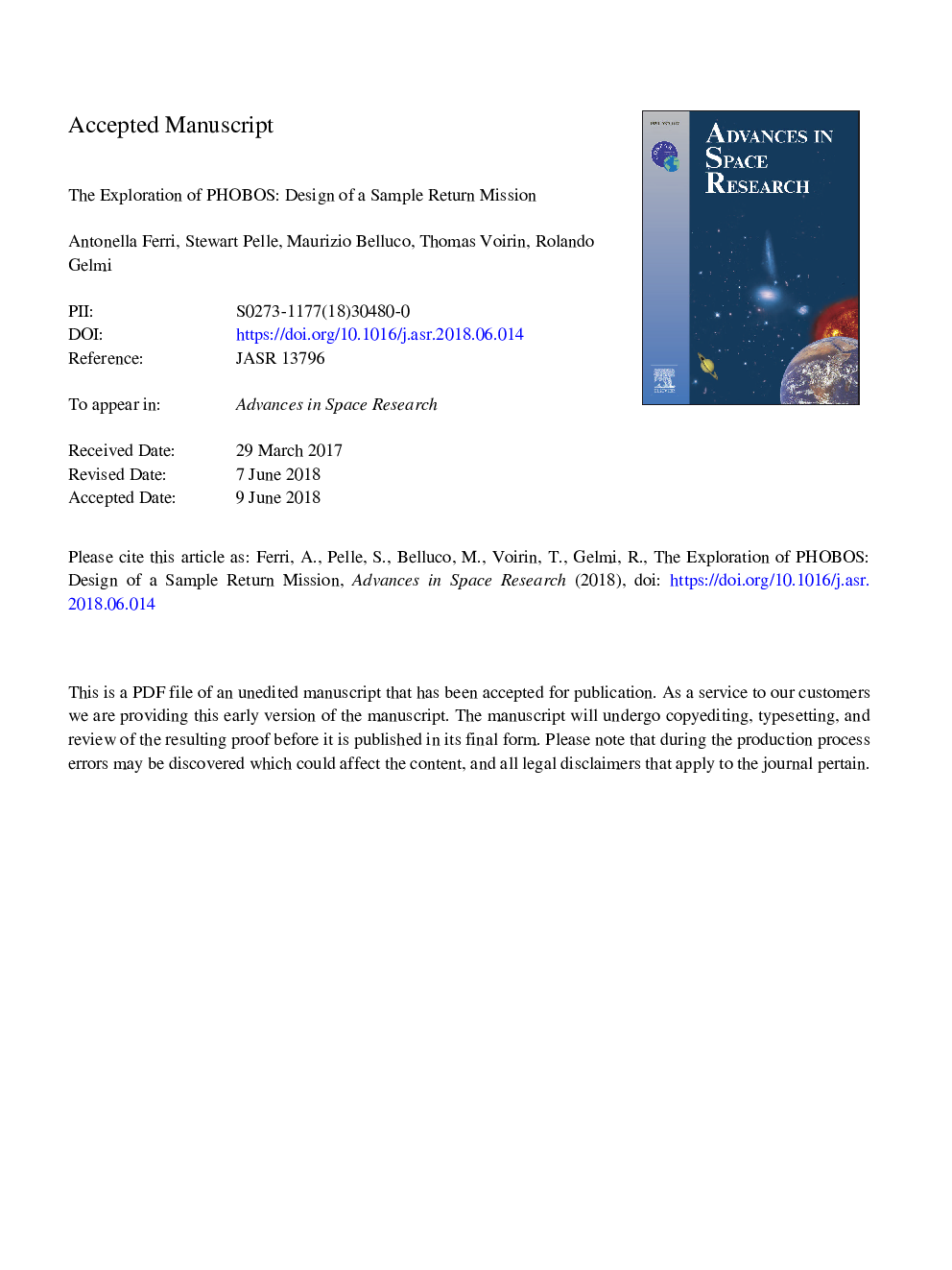| Article ID | Journal | Published Year | Pages | File Type |
|---|---|---|---|---|
| 10156403 | Advances in Space Research | 2018 | 18 Pages |
Abstract
Thales Alenia Space represents one of two industrial contractors studying the mission to Phase A level. This phase involves investigation of all aspects of the mission and spacecraft design to ensure its feasibility and robustness. The planned launch date for the mission is between 2025 and 2027. The Ariane 5 ECA launch vehicle will be launched from Kourou. A chemical propulsion module will transfer the spacecraft composite to the Martian system, and will then be separated at Phobos. A full characterization campaign of Phobos at different altitudes from orbit will follow. This will include quasi-satellite orbits and flybys, using a payload suite of cameras and spectrometers. When the preferred landing site is identified, a controlled descent and touchdown onto the surface of Phobos will be performed, with a touchdown accuracy of 50â¯m. A robotic arm and sampling mechanism will obtain and verify a sample of surface regolith, and insert it into the Earth re-entry capsule. Part of the Spacecraft will return to the Earth from Phobos and deliver the re-entry capsule to the Earth's atmosphere. The capsule will perform a fully passive Earth entry, descent and landing in Woomera, Australia. It will then be recovered and transferred to a sample curation facility for sample extraction and analysis. This paper summarises the results of the Thales Alenia Space Phobos Sample Return mission and spacecraft design, with a focus on the key elements and mass drivers.
Related Topics
Physical Sciences and Engineering
Earth and Planetary Sciences
Space and Planetary Science
Authors
Antonella Ferri, Stewart Pelle, Maurizio Belluco, Thomas Voirin, Rolando Gelmi,
